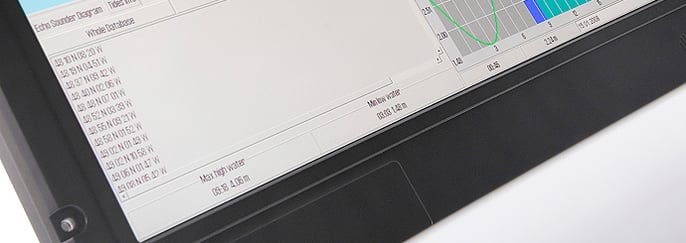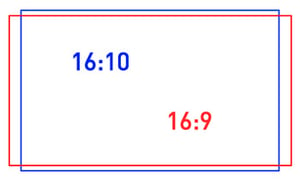| Widescreen And The Settlement Of An Industry Standard |
 S Since the beginning of widescreens, there has been two dominant aspect ratios for widescreen monitors:
- 16:9 - For TV application
- 16:10 - For Monitor application
(desktop monitor, i.e. same LCD being used as basis in industrial monitors).
However this is now changing...
Popular desktop sized LCDs for monitor applications have for a while been available from 19" (WSXGA+) to 27" (WUXGA). A higher resolution 30" LCD (2560x1600) is also available. All these monitors and displays have been in a 16:10 aspect ratio.
 Currently this situation is changing significantly, LCD manufacturers are constantly trying to manufacture LCDs in the most cost effective way. Big sized LCD factories are being built to manufacture large sized 16:9 LCDs for TV market, and mother glasses are being optimized for 16:9 products. In the same factories, LCDs for monitors are being manufactured. In order to achieve cost efficiency and mass-production advantages, the producers encourage a shift to one common format for both applications (TV and monitor). Currently this situation is changing significantly, LCD manufacturers are constantly trying to manufacture LCDs in the most cost effective way. Big sized LCD factories are being built to manufacture large sized 16:9 LCDs for TV market, and mother glasses are being optimized for 16:9 products. In the same factories, LCDs for monitors are being manufactured. In order to achieve cost efficiency and mass-production advantages, the producers encourage a shift to one common format for both applications (TV and monitor).
As a consequence of this, major players in the market are shifting towards 16:9, also for monitors. This has already happened for smaller sized products, if you are buying a 20" LCD for your office today, the most competitive product will be a 16:9 monitor.
This market-transition is happening fast! We know that it is still possible to get 16:10 monitors in 19" to 27" segment for still some time, but we believe that sometime soon they will all be announced End Of Life - (if not already...)
For this reason, we recommend our customers to take this shift into consideration as soon as possible. Re-design to new mechanical and software aspect ratio is not done overnight, and must be planned. Maritime business is in the bigger context representing a very small portion of the total production volumes of displays and monitors.
This means that we need to follow the market trends, and try to anticipate as early as possible the changes to come, in order to manage market-shifts like this in the best possible way.
The consequences for the maritime business:
16:9 for 320mm Radar:
- Larger widescreen LCD to meet the 320mm radar requirement.
- 25.5" 16:9 - estimated height is 317mm
- 26" 16:9 - estimated height is 323mm
- 27" 16:9 - estimated height is 336mm = basically bare minimum for 320mm RADAR
16:9 for ECDIS:
- 21.5" 16:9 - LCD can only show 268mm height. (not ok)
- 23" 16:9 - OK for ECDIS
Hatteland Display has plans for both sizes. Please contact your sales contact for a 16:9 discussion.
|
|

